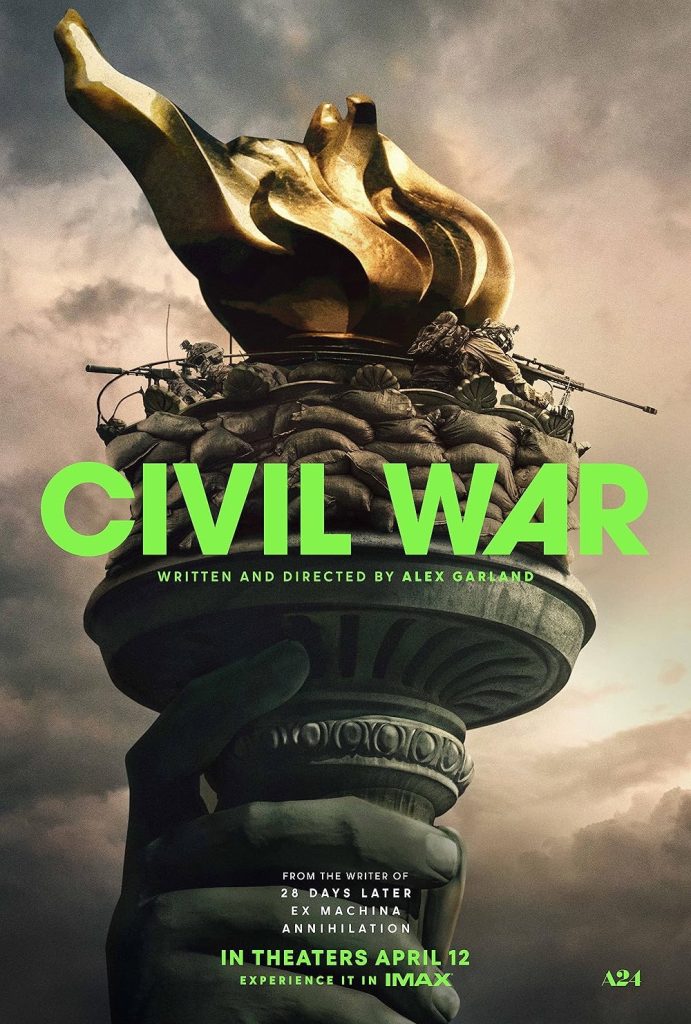

This is a pretty good film. And the premise, of America having another Civil War, no longer seems at all far fetched. Particularly after Trump’s riotous mob-rule near-coup, the infamous Jan’ 6th..
One of the key things this movie does well, is bring all that global terrorism and proxy war business, which we re all so familiar with imagery of, on TVs, computers, tablets and phones, right on home to roost. Back in the good ol’ US of A.
And so it is that two of our key protagonists – the world-weary elder photojournalist, Lee Miller (Kirsten Dunst) and the younger aspiring photographer, Jessie (Cailly Spaeny) – meet at a scene of urban rioting, when a flag bearing suicide bomber charges into the melee.
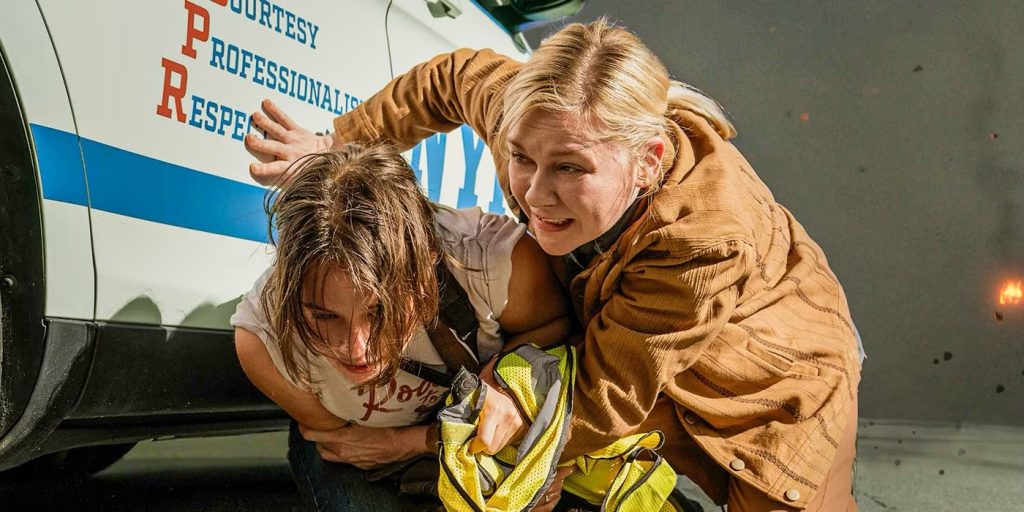
The film manages to stay almost completely neutral, most of the time, to such an extent it becomes – as is so often the case in real war – almost impossible to tell who’s who. Indeed, there’s a sniper scene, which heavily underscores this exact point, in case you weren’t getting the subtler cues.
It also points up the ways in which all ‘sides’ quickly descend into barbarism, during war time. Simultaneously both celebrating and yet shining an uncomfortable light on the detached-professionalism ideal, of the press. Or rather the press as it perhaps once was?
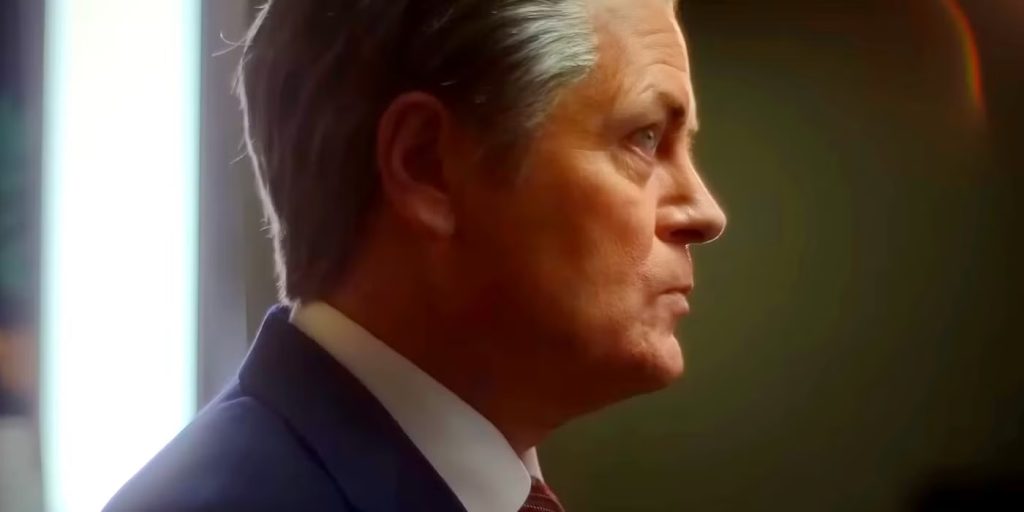
Ultimately the film becomes a road trip: a group of journalists attempt to get to Washington DC, hoping for the gigantic ‘scoop’ of a presidential interview.
Besieged in D.C. the third term POTUS has not been interviewed – the movie opens with him rehearsing a chest-beatingly upbeat and patriotic to-camera soliloquy – in over a year.
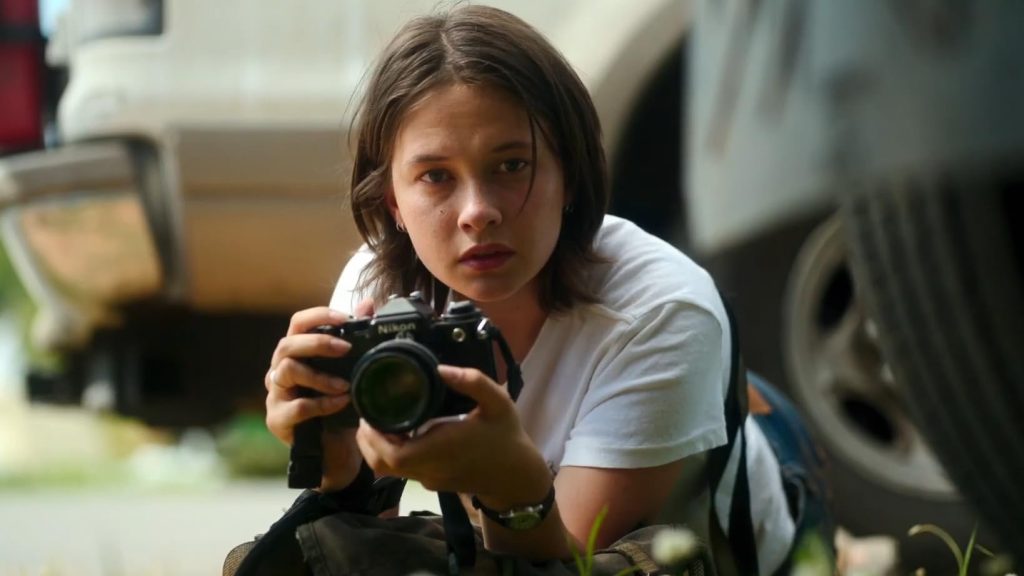
Jessie is just a kid. But also along for the ride is the elderly and morbidly obese Sammy, a veteran NY Times scribe. With two strong female leads, further yin to their yang is provided by Wagner Moura, as Joel, Lee’s writing partner, who’s cynical, and overly fond of booze and weed.
The sense of terror and chaos alternating with normality and tranquility features quite a lot. Sometimes in contrasting sections of the narrative, and at others, almost simultaneously; as during the sniper firefight, when natures’ flowers, in all their small delicate beauty, are blooming, regardless of human strife and folly.

The sound design is a bit ham-fisted, in places. At least to my mind. Shoe-horning some questionable musical choices into the movie, none-too delicately. And the use of occasional ‘deafening silence’, whilst as effective as ever, was a bit overplayed.
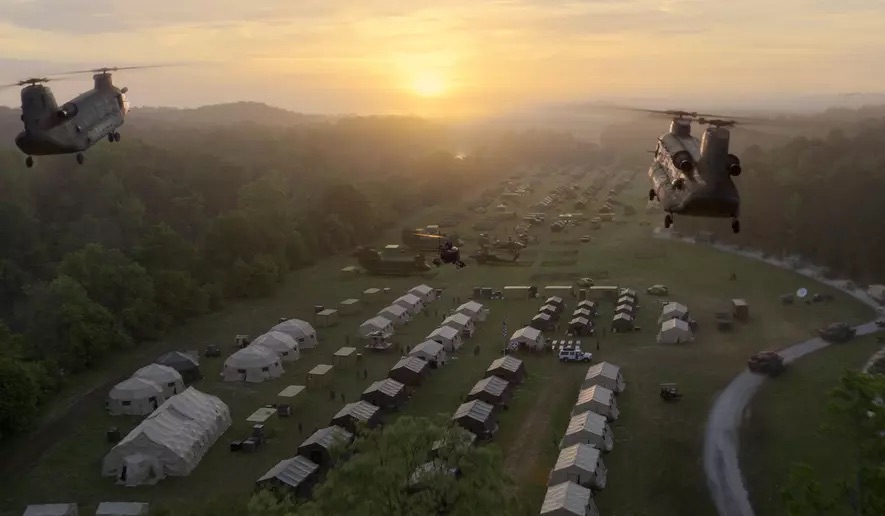
This apparently had an humongous budget. And you can see where the money’s gone. But it also looks like extensive use was made of very slick CGI. Nowadays that’s generally so good – hyper-real, almost? – that you really can’t tell where reality and CGI end or meet.
Perhaps the most powerful and disturbing scene is that in which an unnamed soldier (or we assume he’s a soldier, as he and his cronies are in battle dress), played by Jesse Plemons*, terrorises the group of journos, who have encountered some old friends/colleagues on the road.
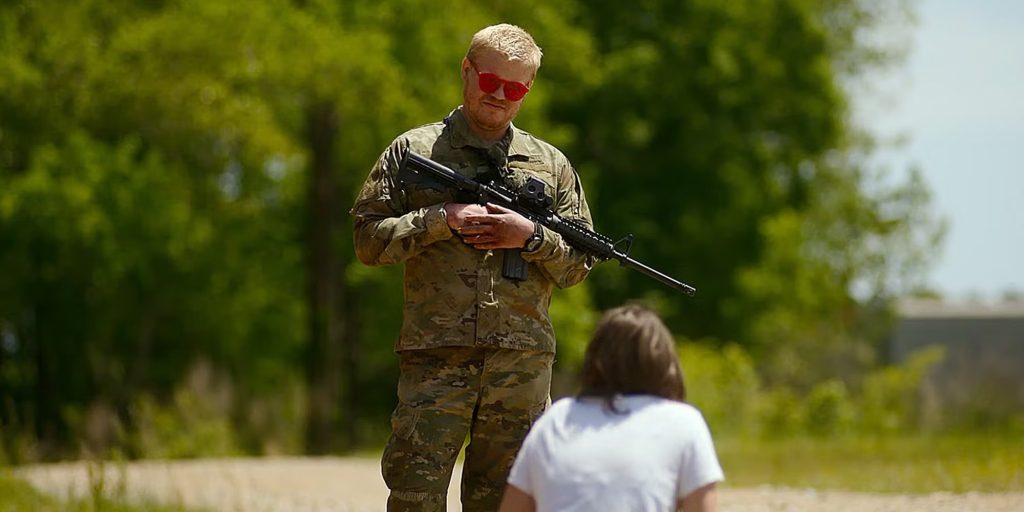
*Kirsten Dunst’s real-life spouse, and – or so I’ve read – a last minute replacement for the actor originally cast in the role.
In this short and grim episode, we get a glimpse of the horrifically brutal simple-mindedness that underlies so much human conflict, in the form of racism.
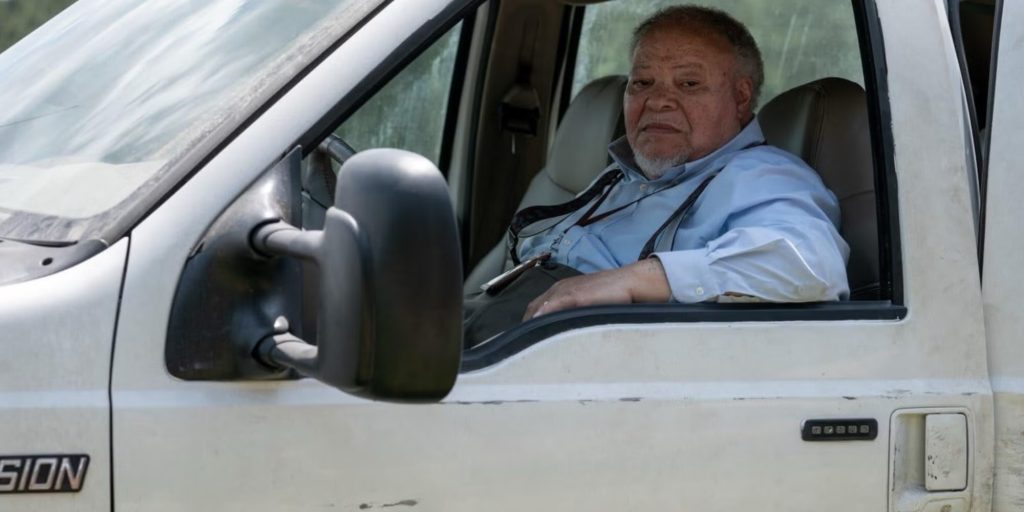
In the end, against seemingly hopeless or insuperable odds, the journos – or some of them – reach the Whitehouse, just as the WF (‘Western Forces’?) storm it, massacring a cavalcade of fleeing spooks and aides, mistakenly thought to be the fleeing POTUS.
And here the film reaches its rather grim denouement. Spoiler alert: the WF troops find and ‘take out’ the POTUS. What does it all mean? Well, aside from the Babi Yar style massacre scene, the production team resolutely strive for neutrality. But in the context of Trumpian politics? There’s a clear and very disturbing message.
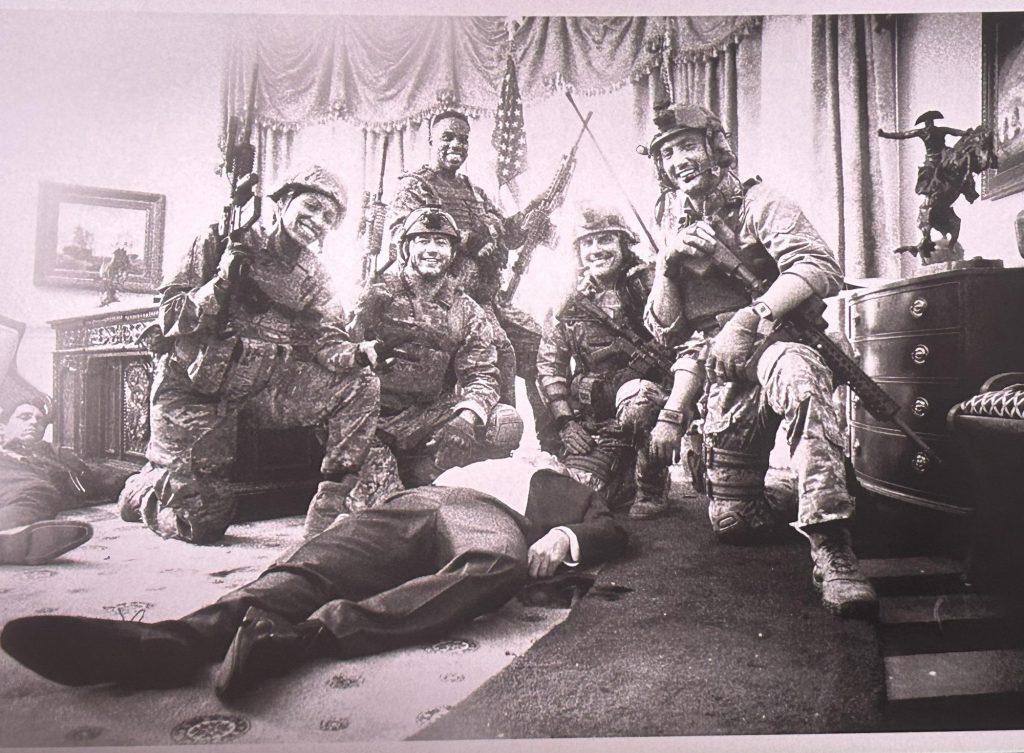
Whilst it’s not made immediately explicit, we pick up that the President is a third term despot. Racism is the fundamental part of the ‘what kind of American are you’ conundrum. And our faces are rubbed in the extreme inhumanity – or perhaps I should just say brutality? – of war, which, despite the film’s themes/title, is never very civil, if you follow?
There’s a couple of very good reviews of the film here, and here, that are both well worth a read.
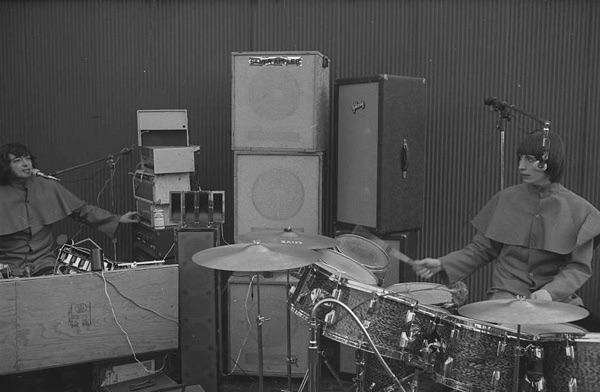
FOOTNOTE: Music
The first very prominent bit of pop-culture OST programming, that slaps you in the face, is the rather brilliantly quirky ‘Lovefingers’, by Silver Apples. It’s an amazing piece. Esp’ so given it was released in 1968! I’m not entirely sure it’s the best choice for that particular moment in the film. But maybe I’m wrong. Whatever! What I am glad of is that it’s there at all. Reminding me I need to check out Silver Apples in more depth.
